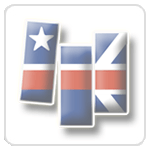| Question |
YES |
NO |
| Real atoms are not too tiny. |
|
|
| You can only see atoms under a very special microscope. |
|
|
| Atoms can be cut. |
|
|
| Atom means indivisible, which means it can't be divided further or can't be cut further. |
|
|
| Everything you see around you is made up of atoms. |
|
|
| Everything is made up of molecules, but all molecules are not made up of atoms. |
|
|
| Atoms are the smallest units of everything. |
|
|
| Water is made up of water molecules, but it is also made up of atoms. |
|
|
| There are two atoms of hydrogen and two atoms of oxygen in each water molecule. |
|
|
| When molecules join together, they form an atom and when atoms join together, they form a thing. |
|
|
| In the center of an atom there is the nucleus and it's made up of even smaller parts. |
|
|
| The smaller parts of the nucleus are called electrons and neutrons. |
|
|
| Each proton of the nucleus carries a negative electrical charge. |
|
|
| The neutrons don't carry any electrical charge, like protons. |
|
|
| The nucleus of an atom has a positive charge due to the protons. |
|
|
| Electrons are outside the nucleus; they are orbiting around the nucleus. |
|
|
| Electrons carry a positive charge. |
|
|
| The total negative charge of electrons is equal to the positive charge of the nucleus. |
|
|
| An atom is neutral: the positive charge of the protons is neutralized by the negative charge of the electrons. |
|
|
| The electrons are moving outside the nucleus at a very slow speed. |
|
|
| Electrons can run away from the nucleus. |
|
|
| Every atom has the same number of protons, electrons and neutrons. |
|
|
| Electrons keep moving in shells outside the nucleus. |
|
|
| Each shell contains an unfixed number of electrons. |
|
|
| The first shell can have two electrons and the third can have eight electrons. |
|
|
| The third shell can hold eighteen eletrons. |
|
|
| The fourth shell can hold up to thirty-two eletrons. |
|
|
| The outermost shell is called the valence electron. |
|
|
| Atoms bond with other atoms to form a molecule with the valence electrons in the valence shell. |
|
|
| Atoms always keep trying to fill their shells. |
|
|
| An oxygen atom has eight electrons in its second shell. |
|
|
| A hydrogen atom has only one electron in its outer shell. |
|
|



